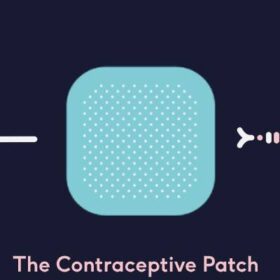
How long does it take to adjust to new birth control?
In this article
What's the lowdown?
The thinking behind the ‘3 month rule’ is that it takes around 3 menstrual cycles for your body to adapt to the change in hormone levels caused by contraception
Research shows that in most cases women’s side effects settle down after 3 months
Science indicates that the body will get used to the new hormone levels after 3 months – if not, it may be worth speaking to your doctor or nurse and considering whether to change your contraception
Some symptoms need urgent medical attention such as severe chest or leg pain
The initial side effects of adjusting to contraception can be dealt with via pain relief and lifestyle changes
Written by Elizabeth Bennet
The time frame that’s nearly always stated? 3 months. With most health practitioners suggesting a check-up appointment after the first 12 weeks, it’s often assumed by this point your body would have adapted to whatever the form of contraception is.
However, is this time frame based on data or an arbitrary number plucked from the air? Much like lots of issues surrounding contraception, the waters are a little murky (thanks gender health gap) but there certainly is some interesting research in this area.
Here, we dive into whether waiting 3 months is really the golden rule when deciding whether a contraception is right for you.
Where did the 3 month rule originate from?
When it comes to hormonal contraception, the general consensus is that it takes around 3 menstrual cycles for the body to adjust to the change in hormones.
Whether you opt for a progestogen only form of contraception (the mini pill, hormonal coil, injection or implant) or one that uses oestrogen and progestogen (the combined pill, patch or vaginal ring), the shift in hormones in your body can cause side effects.
Most commonly, these are nausea, headaches, tender breasts, emotional fluctuations and unscheduled bleeding (aka spotting in between monthly bleeds).
What scientific evidence is there to support this?
Research shows that side effects (in particular, bloating, nausea, and breast tenderness) usually subside within the first 3 months1. One study looked specifically at spotting on the hormonal contraceptive pill – the inconvenient bleeding throughout your cycle (cue extra laundry) and found that it was more common in the first 3 months.
Between 30% and 60% of women reported breakthrough bleeding during the first 3 months but this decreased to 10-30% after the 3 month mark had passed2. In another study of 196 women, 24% reported breakthrough vaginal spotting during the first 3 months but this rate decreased to 4% during the last 3 months of use3.
There is similar evidence when it comes to the hormonal implant. Research looking at Implanon (an older brand of implant) found that 50% of users experienced infrequent bleeding during the first three months but this decreased to 30% by the sixth month4.
It’s not just hormonal contraception that can take some getting used to, the copper coil (also known as an intrauterine device or IUD) can also cause initial issues. The copper coil works by releasing copper into the womb instead of progestogen used in the hormonal coil (known as the intrauterine system or IUS). Research suggests that 70% of women using the copper coil will experience spotting and heavier bleeds during the first six months of having the coil inserted5.
Riding out the first 3 months (or maybe even longer with the copper coil) is therefore a logical option for most women. After this time period, if the side effects are still present, it may be worth discussing these with your doctor or nurse.
“Remember these are synthetic hormones therefore, it makes sense that there will be a period of adjustment for the body to familiarise itself. Most studies have shown that unscheduled or irregular bleeding is more likely in the first cycle, and that improvement is seen over the first 3 months. Therefore, it makes sense to recommend that women experiencing this to continue their method of contraception for at least 3 months before seeking advice,” GP Dr Hannah Davies confirms.
Does the body get used to hormonal contraception?
For the majority of women, their body will adapt to the additional hormones (or copper in the case of the coil) either quite quickly or by the end of the first three months.
For those where it doesn’t, a discussion with your doctor or nurse can help you work out whether continuing or changing your contraception is right for you. Some symptoms may also warrant further investigation by your doctor.
“Hormone levels in the blood may vary 10-fold between individuals, so what works for one woman may not work for another,” Davies points out.
Do you always need to wait 3 months to get used to hormonal contraception?
Some symptoms require immediate medical attention. There’s an easy anagram to remember here: ACHES. If you notice any of the below, consult your doctor.
- Abdominal or stomach pain (severe)
- Chest pain (severe), cough, shortness of breath, coughing blood
- Headache (severe), dizziness, weakness, or numbness
- Eye problems (vision loss or blurring), speech problems
- Severe leg pain (calf or thigh)
Otherwise, waiting around 3 months to see if the contraception works for you is probably your best bet. In the meantime, you can try a number of methods to manage your symptoms.
How to deal with side effects of new contraception
- Make a diary
Grab a notepad or use an app in your phone to document the side effects you’re experiencing and when they happen. Specific patterns of side effects can help giude how to manage them. If you do decide to change contraception, you can take this information to discuss with your health practitioner.
- Use pain relief
Pain medication might be needed to deal with headaches or additional cramps.
- Eat healthily and move more
Packing your plate with nutritious food and exercising where possible is likely to put your body in the best possible position to deal with the changes.
- Find ways to stress less
Easier said than done, but high levels of stress may also intensify side effects. Try to incorporate a meditation or gentle yoga practise into your day and make time for self-care activities like a long phone call with a friend or a quiet night in in front of Netflix.
Overall, if you’re finding the side effects annoying but managable, try pushing through to 3 months. If the side effects are unbearable or drastically affecting your quality of life, then don’t. If side effects don’t settle after 3 months, you can discuss with our doctors for tips on how to improve side effects or use our contraception recommender quiz to look for an alternative options.
Our medical review process
This article has been medically reviewed for factual and up to date information by a Lowdown doctor.






